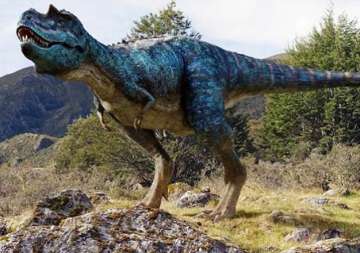London: While you must have read about dinosaurs being engaged in “foreplay”, British scientists now reveal that they used large ornamental structures such as horns and head crests in sexual displays and to assert social dominance.
This is the first time scientists from Queen Mary University of London (QMUL) have linked the function of anatomy to sexual selection in dinosaurs.
Small-horned dinosaurs Protoceratops had a large bony frill that extended from the back of the head over the neck.
Study of 37 specimens of Protoceratops from fossils found in the Djadochta Formation in the Gobi desert aged from babies to adults revealed the adults to have disproportionately larger frills in relation to their size.
The research, published in the journal Palaeontologia Electronica, shows that the frill was absent in juveniles and suddenly increased in size as the animals reached maturity suggesting that its function is linked to sexual selection.
This suggests the frill might have been used to attract suitable mates by showing off their best attributes or helping them assert the most dominant position in social interactions.
“Palaeontologists have long suspected that many of the strange features we see in dinosaurs were linked to sexual display and social dominance but this is very hard to show,” said Dr David Hone, lecturer in zoology from QMUL.
“The growth pattern we see in Protoceratops matches that seen for signalling structures in numerous different living species and forms a coherent pattern from very young animals right through to large adults,” he explained.
Biologists are increasingly realising that sexual selection is a massively important force in shaping biodiversity both now and in the past.
“Not only does sexual selection account for most of the stranger, prettier and more impressive features that we see in the animal kingdom, it also seems to play a part in determining how new species arise,” noted Dr Rob Knell, reader in evolutionary ecology.
There is increasing evidence that it also has effects on extinction rates and on the ways by which animals are able to adapt to changing environments, the authors noted
